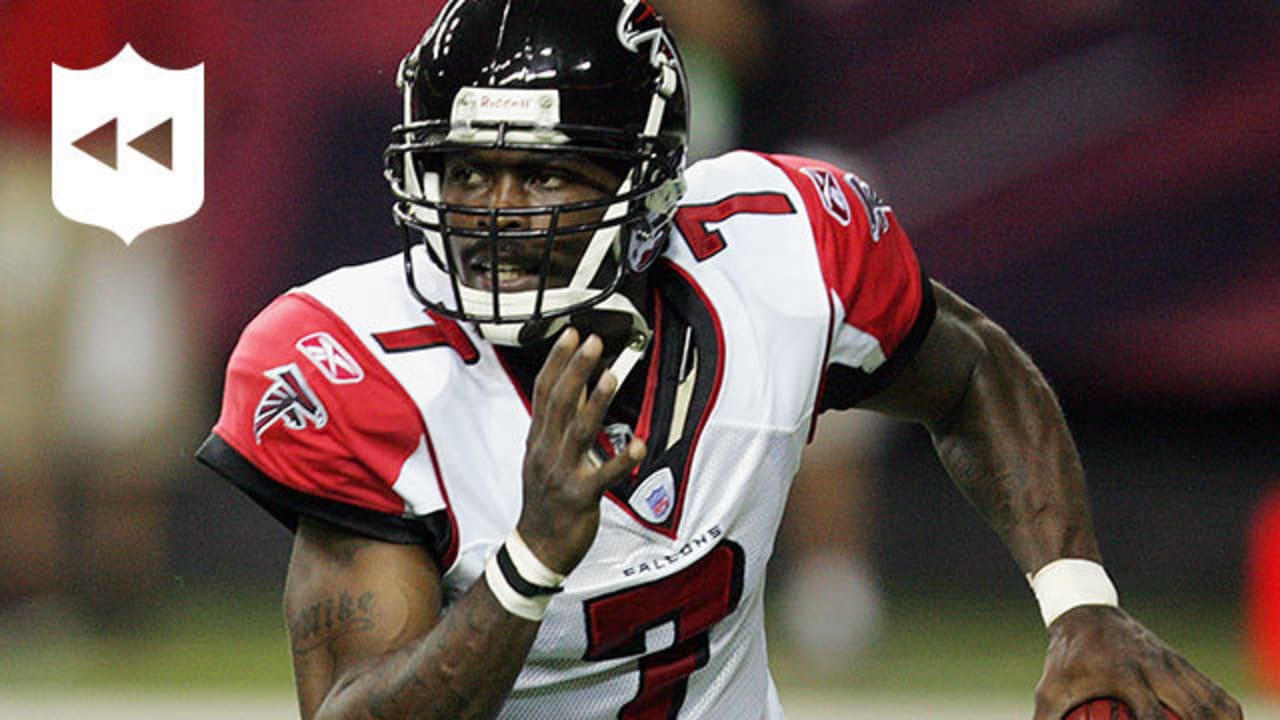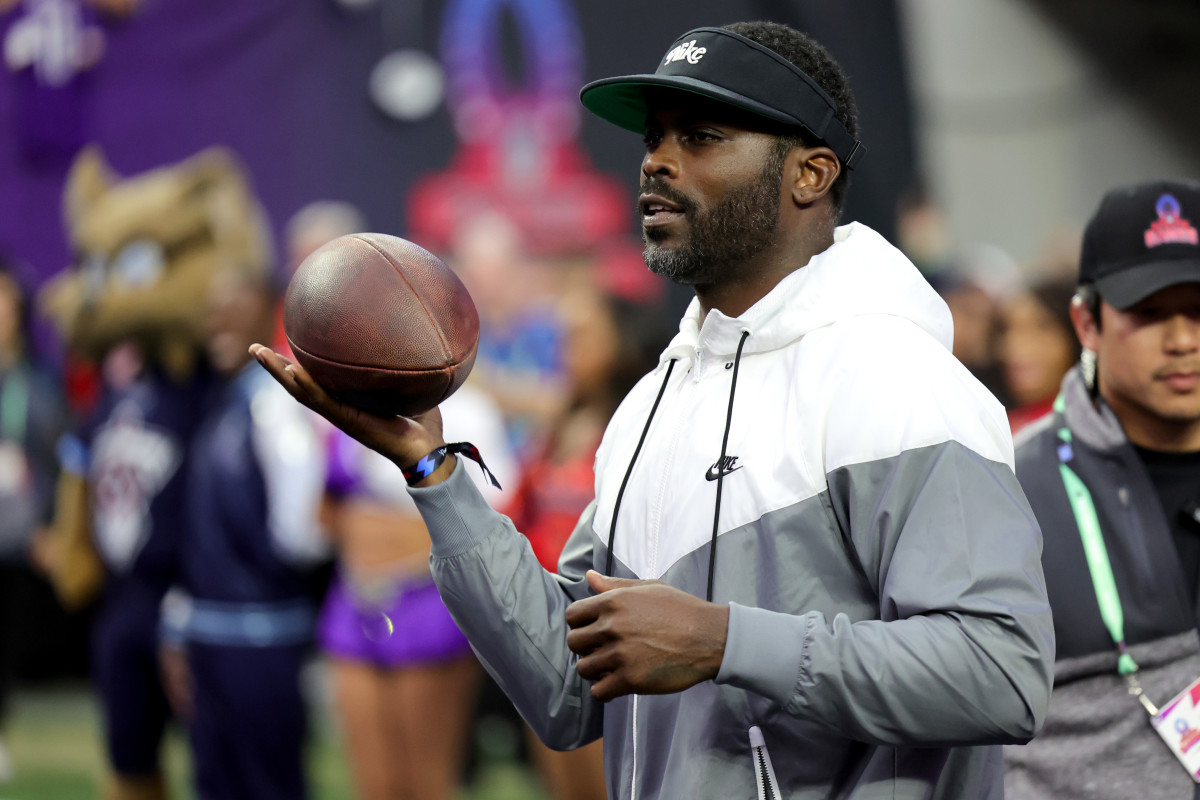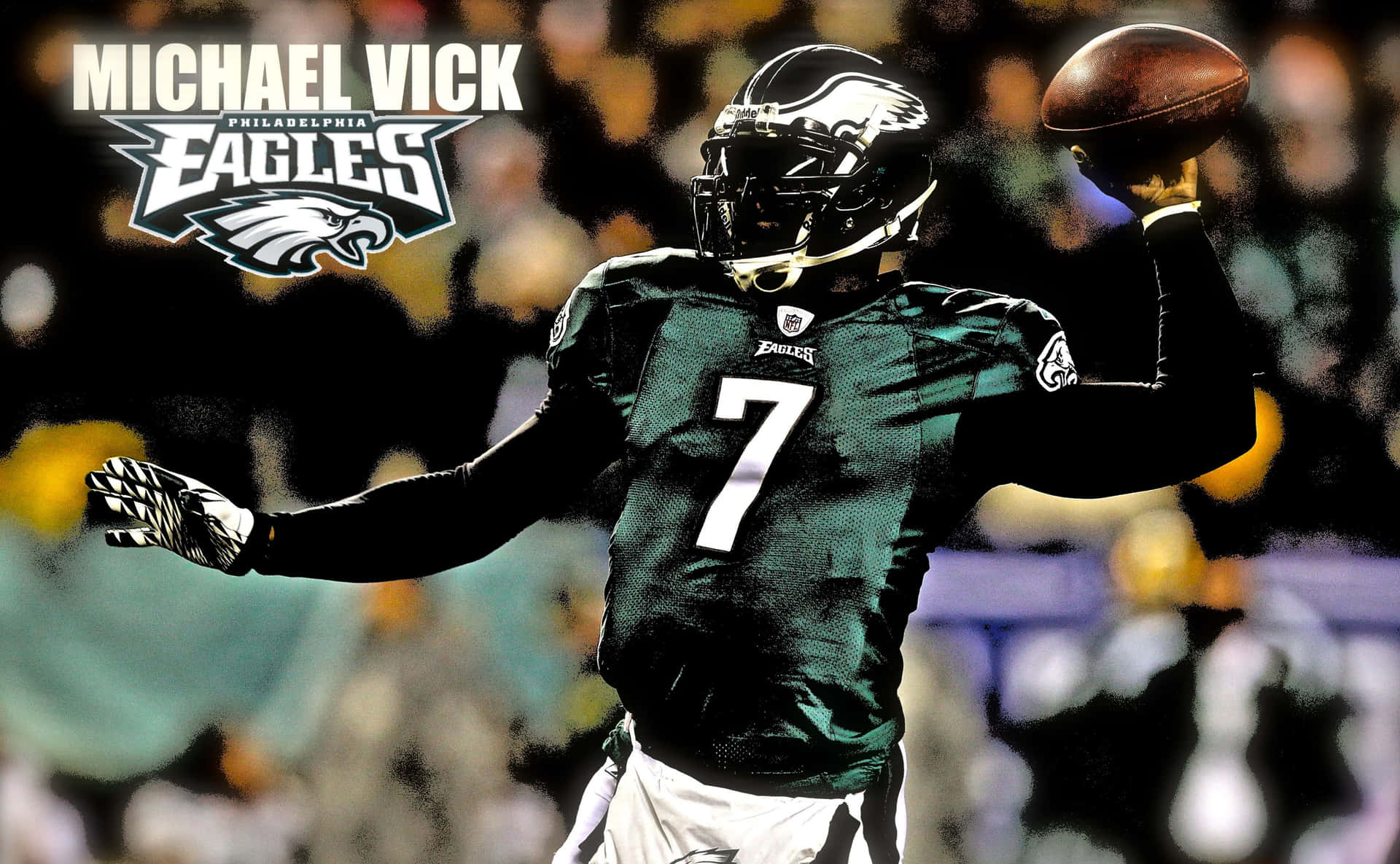A Comprehensive Look At Michael Vick Statistics And His NFL Legacy
When it comes to discussing NFL legends, Michael Vick's name often comes up as one of the most polarizing yet incredibly talented players in the league's history. His career was filled with moments that left fans in awe, but it also faced challenges that defined his legacy. Today, we’re diving deep into Michael Vick statistics to uncover the truth behind his impact on the NFL and why his legacy continues to resonate years after he left the field.
Michael Vick isn’t just another quarterback; he’s a player who changed the game with his unique skill set. As we explore his stats, we’ll see how his athleticism and leadership transformed the way teams viewed dual-threat quarterbacks. This isn’t just about numbers—it’s about understanding the man behind the jersey.
Whether you’re a die-hard football fan or someone curious about how stats shape a player’s legacy, this article will give you an in-depth look at Michael Vick's NFL journey. Let’s get started!
Read also:Karis Jagger The Rising Star In The Spotlight
Here’s a quick guide to what we’ll cover:
- Biography and Background
- Early Career Highlights
- Peak Years in the NFL
- Key Michael Vick Statistics
- The Comeback Story
- Legacy in the NFL
- Impact on Future Quarterbacks
- Criticism and Controversy
- Awards and Recognition
- Conclusion and Final Thoughts
Biography and Background
Before we dive into the numbers, let’s take a step back and talk about the man himself. Michael Vick was born on June 18, 1980, in Newport News, Virginia. From a young age, it was clear that he had a special talent for football. He grew up idolizing legends like Steve Young and Randall Cunningham, but little did he know he’d one day be mentioned in the same breath as them.
Here’s a quick breakdown of his background:
| Full Name | Michael Ray Vick |
|---|---|
| Date of Birth | June 18, 1980 |
| Place of Birth | Newport News, Virginia |
| Height | 6 ft 1 in (185 cm) |
| Weight | 213 lbs (97 kg) |
| Position | Quarterback |
Michael’s journey to the NFL began at Warren County High School, where he quickly became a star. His ability to run and pass with ease caught the attention of college scouts, leading him to Virginia Tech. At Virginia Tech, he set records that still stand today, showcasing his incredible athleticism.
Why Michael Vick Matters
What makes Michael Vick so special? Well, it’s not just his stats—it’s how he redefined the quarterback position. In a league dominated by pocket passers, Vick showed that you could be successful by using your legs just as much as your arm. This was revolutionary at the time and continues to influence how teams approach the position today.
Early Career Highlights
Michael Vick entered the NFL in 2001 as the first overall pick by the Atlanta Falcons. This was a big deal because it wasn’t every day that a team drafted a quarterback so high based on his potential to run the ball. The Falcons saw something special in Vick, and they weren’t wrong.
Read also:Jack Cooper Facinelli The Rising Star Whos Making Waves In Hollywood
During his early years, Vick wowed fans with his ability to make plays happen when things seemed impossible. He became known for his incredible speed and agility, often outrunning defenders who were twice his size. His rookie season wasn’t without its ups and downs, but by his third year, he was already making waves as one of the most exciting players in the league.
Key Moments from His Early Career
- 2002: Named to the Pro Bowl for the first time
- 2003: Set a record for most rushing yards by a quarterback in a single season
- 2004: Led the Falcons to their first playoff appearance since 1998
These early successes set the stage for what would become a career filled with both triumphs and challenges.
Peak Years in the NFL
Michael Vick’s peak years came during his time with the Atlanta Falcons, particularly from 2003 to 2006. During this period, he truly showcased his dual-threat abilities, leaving defenders scrambling and fans on their feet. Let’s break down some of the highlights from these years:
In 2003, Vick set the NFL ablaze with his rushing abilities, becoming the first quarterback to rush for over 1,000 yards in a season. This was a monumental achievement that put him in the conversation with other great running quarterbacks like Steve Young and Randall Cunningham. But it wasn’t just about rushing; Vick also showed off his passing skills, throwing for over 2,800 yards and 19 touchdowns that year.
Fast forward to 2004, and Vick was leading the Falcons to their first playoff appearance in six years. His combination of speed, strength, and accuracy made him nearly unstoppable on the field. Unfortunately, his career took a turn in 2006 when he faced legal issues that would sideline him for a few years.
What Made Him Stand Out?
Michael Vick’s peak years were defined by his unmatched athleticism and playmaking ability. He could extend plays with his legs, make defenders miss, and still deliver pinpoint passes downfield. It was a rare combination of skills that made him a nightmare for opposing defenses.
Key Michael Vick Statistics
Now, let’s talk numbers. Michael Vick’s stats tell the story of a player who was truly ahead of his time. Here are some of the most impressive stats from his career:
- Total Passing Yards: 16,766
- Total Rushing Yards: 6,109
- Passing Touchdowns: 103
- Rushing Touchdowns: 36
- Pro Bowl Appearances: 4
These numbers don’t just show his productivity; they highlight his versatility as a player. Vick was more than just a quarterback—he was a game-changer who could impact the game in multiple ways.
Breaking Down the Numbers
Let’s take a closer look at some of these stats:
Michael Vick’s 6,109 rushing yards are the second-most by a quarterback in NFL history, trailing only Steve Young. This is a testament to his incredible ability to make plays with his legs. Additionally, his 103 passing touchdowns and 36 rushing touchdowns show that he could score in a variety of ways, making him a threat every time he stepped on the field.
The Comeback Story
After serving a 23-month prison sentence for his involvement in a dogfighting ring, Michael Vick returned to the NFL in 2009. Many doubted whether he could still play at a high level, but Vick proved them wrong. He signed with the Philadelphia Eagles and quickly became a key player for the team.
His comeback was nothing short of miraculous. In 2010, Vick had one of the best seasons of his career, throwing for over 3,000 yards and rushing for nearly 700 yards. He was named the NFL Comeback Player of the Year and once again found himself in the Pro Bowl.
Lessons from the Comeback
Michael Vick’s comeback story is a powerful reminder that people can change and overcome adversity. It also showed that his talent was still intact, even after being away from the game for so long. This period of his career solidified his place as one of the most resilient players in NFL history.
Legacy in the NFL
When we talk about Michael Vick’s legacy, it’s important to consider both the positive and negative aspects of his career. On one hand, he revolutionized the quarterback position and inspired a generation of players to embrace their athleticism. On the other hand, his off-field issues will always be part of the conversation.
Despite this, Vick’s impact on the game cannot be denied. He paved the way for future quarterbacks like Cam Newton, Russell Wilson, and Lamar Jackson, who have all benefited from the shift in how teams view the position.
How Vick Changed the Game
Before Michael Vick, dual-threat quarterbacks were often seen as a novelty. After Vick, they became a legitimate threat. Teams started drafting and developing quarterbacks who could run and pass effectively, changing the way offenses were built. This shift has had a lasting impact on the NFL, and Vick deserves credit for being at the forefront of it.
Impact on Future Quarterbacks
Michael Vick’s influence can be seen in today’s game through the success of modern dual-threat quarterbacks. Players like Lamar Jackson and Kyler Murray are redefining what it means to be a quarterback, and they owe a debt of gratitude to Vick for paving the way.
Vick showed that you didn’t have to fit the traditional mold to be successful in the NFL. His ability to make plays with both his arm and his legs opened up new possibilities for teams and players alike.
What the Future Holds
As the NFL continues to evolve, we can expect to see more quarterbacks who follow in Michael Vick’s footsteps. The game is becoming faster and more dynamic, and players who can do it all will continue to thrive.
Criticism and Controversy
No discussion of Michael Vick would be complete without addressing the controversies that have surrounded him throughout his career. His involvement in a dogfighting ring was a dark chapter in his life, one that led to legal consequences and widespread criticism.
However, Vick has taken responsibility for his actions and worked hard to make amends. He has become an advocate for animal rights and has used his platform to promote positive change. While some may never forgive him, others see his transformation as proof that people can change and grow.
Redemption and Growth
Michael Vick’s journey from controversy to redemption is a powerful story that resonates with many. It’s a reminder that mistakes don’t have to define us and that we all have the potential to improve and make a difference.
Awards and Recognition
Throughout his career, Michael Vick has received numerous awards and accolades. Here are some of the highlights:
- 4-time Pro Bowl selection (2002, 2003, 2004, 2010)
- NFL Comeback Player of the Year (2010)
- Named to the NFL All-Decade Team for the 2000s
These honors are a testament to his talent and impact on the game. They also highlight the respect he earned from his peers and the football community.
Why Awards Matter
Awards are more than just recognition; they are a validation of a player’s contributions to the game. For Michael Vick, these awards are a reminder of the hard work and dedication he brought to the field, even during challenging times.
Conclusion and Final Thoughts
As we wrap up our comprehensive look at Michael Vick statistics and his NFL legacy, it’s clear that he was a player who left an indelible mark on the game. His incredible athleticism, playmaking ability, and resilience in the face of adversity make him one of the most fascinating figures in NFL history.
While his career wasn’t without its challenges, Vick’s ability to overcome obstacles and inspire others is a testament to his character. His influence on the game continues to be felt today, and his legacy will undoubtedly be remembered for years to come.
So, what’s next? If you enjoyed this article, feel free to leave a comment or share it with your friends. And if you’re hungry for more NFL insights, check out our other articles on the site. Until next time, keep cheering for the game—and the players who make it unforgettable!
Article Recommendations


